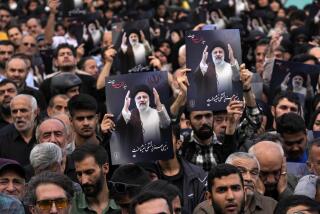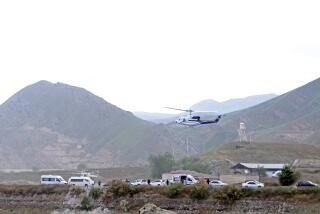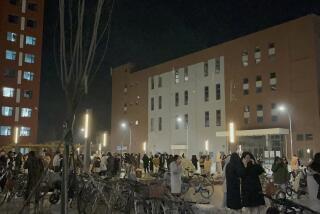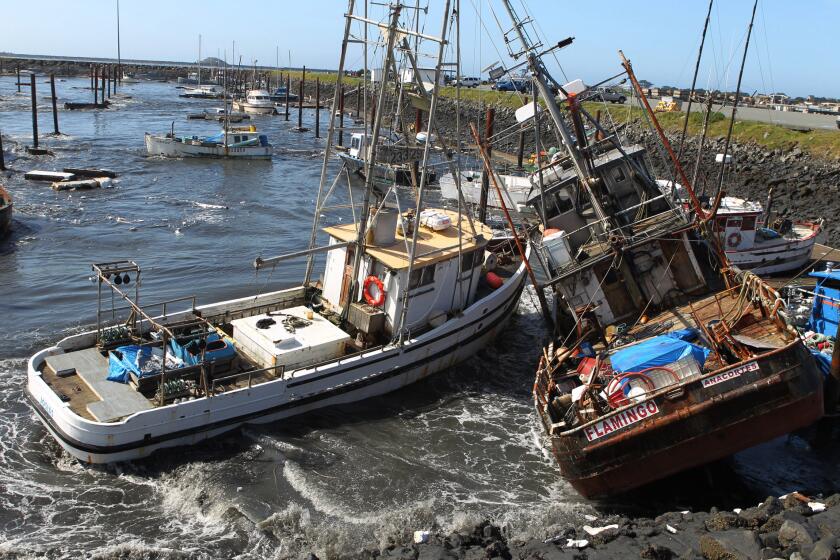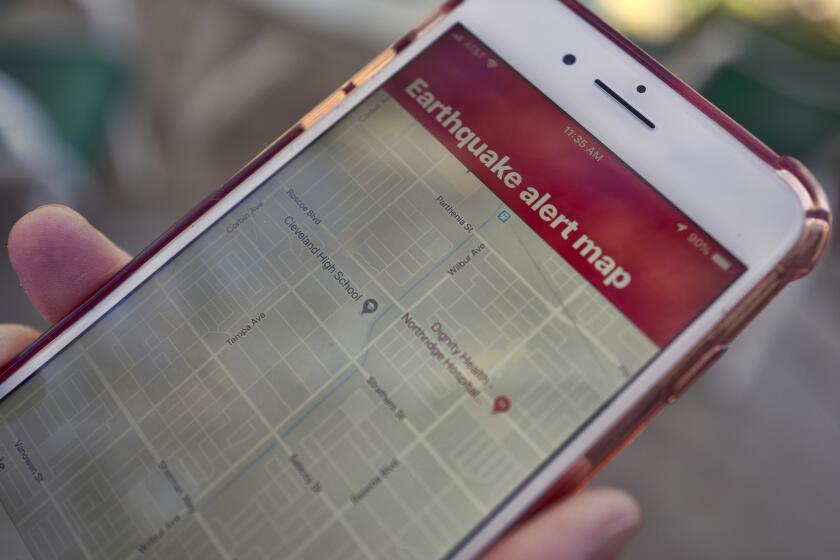1,000 Killed, 5,000 Hurt as 7.1 Quake Hits Iran
- Share via
QAYEN, Iran — A powerful earthquake devastated 200 villages in the remote mountains of northeastern Iran on Saturday, killing at least 1,000 people and injuring 5,000. Survivors frantically pulled victims from collapsed buildings and rushed them to makeshift emergency centers.
Iran appealed for international aid for the stricken villages and towns, many of them cut off by landslides triggered by the magnitude 7.1 quake. Iranian volunteers hurried to the region to help dig out the dead and injured, state-run Tehran radio said.
Radio reports early today said 140 rescue teams sent by helicopters to the area were struggling to reach survivors buried in the rubble, while another 350 teams were on their way from other parts of Iran.
Army units were joining in to transport blankets, tents and food to the quake-stricken area, an agricultural region known for its saffron production, the reports added.
The earthquake struck at 12:28 p.m. Saturday, said the U.S. Geological Survey in Golden, Colo., and was centered 65 miles north-northeast of Birjand, near the town of Qayen, about 70 miles west of the Afghan border.
Most of the damage was in communities in the 60-mile stretch between Birjand and Qayen, a region dotted by poor villages and mud huts. The official Islamic Republic News Agency said there was considerable damage in Afghanistan but gave no other details.
“I was outside when I heard the mountain roar like a dragon, and suddenly the air became dark as night from the thick cloud of dust,” one survivor, Gholamreza Nowrouz-Zadeh, said.
More than 100 children, including all six of his grandchildren, were killed when the schoolhouse collapsed in his village of Ardakul, about 60 miles east of Qayen, he said, crying.
“Three of them were pulled out dead, but three others are still buried under the rubble,” Nowrouz-Zadeh said.
Nowrouz-Zadeh was one of about 300 injured people, many bleeding profusely, who were sent to a makeshift hospital set up at a stadium in Qayen.
He lay on the floor with a blood-soaked bandage around his head. Nearby, dozens of intravenous sacks hung from donated coatracks.
Dr. Mohammed Hossein Mozaffar said more physicians were urgently needed.
“I can’t deal with this alone,” he said as he put a cast on the leg of a wailing 5-year-old boy clinging to his mother.
“I don’t know how many casts I have done today, but it seems like hundreds,” Mozaffar said, pointing to piles of empty boxes of casting chalk around him.
Interior Minister Ali Mohammed Besharati asked for international aid, saying Iran was “ready to receive assistance from our God-seeking compatriots and from those countries that would like to assist the earthquake victims,” Tehran television reported.
The radio broadcast a desperate appeal for surgical teams, medical supplies, tents, food, water tankers and ambulances. It said water and power lines to the stricken villages had been severed.
Saturday night, many people in Qayen slept in the streets, shivering in the 41-degree air but too scared to go indoors because of their fear of further quakes.
Tehran radio said about 200 villages were either destroyed or severely damaged in the area, which is home to about 40,000 people.
Most of the villagers in the region are subsistence farmers who either tend camels or sheep or grow wheat and saffron. Many of the injured looked weak and malnourished.
Mashhad, the capital of Khorasan province and about 180 miles north of Qayen, is the nearest place equipped to deal with large numbers of injured--but it is a five-hour drive over rough terrain.
Iran’s supreme leader, Ayatollah Ali Khamenei, expressed pain and sorrow and asked clergy in Khorasan province to use religious endowments to help the victims.
Saturday’s quake was the strongest to strike Iran since two powerful temblors hit northwestern Gilan and Zanjan provinces on June 21, 1990. At least 35,000 people were killed and 60,000 injured in those quakes, which had magnitudes of 7.3 and 7.7.
Iran is prone to earthquakes and experiences scores of small tremors every year.
A devastating Feb. 28 earthquake in northwestern Iran was said by officials at the time to have killed 965 people, but independent estimates put the death toll at more than 3,000. Reports have said that an additional 36,000 people were made homeless by that temblor, which had a magnitude of 6.1.
More to Read
Sign up for Essential California
The most important California stories and recommendations in your inbox every morning.
You may occasionally receive promotional content from the Los Angeles Times.
